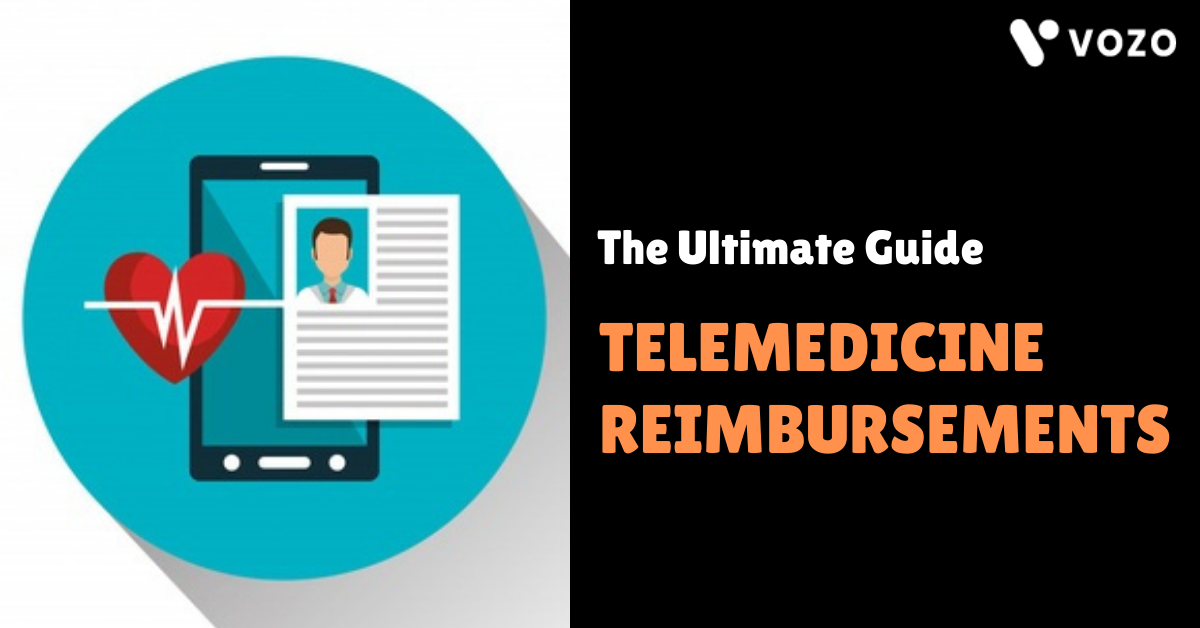The Ultimate Guide To Telemedicine Reimbursements
The global COVID-19 pandemic has accelerated the need for secure healthcare delivery solutions. This gave a huge rise to telehealth services. Even though patients prefer telehealth for their convenience; the adoption has been stalled by several regulatory challenges.
Centers for Medicare and Medicaid Services (CMS) released the final rule – allowing healthcare providers to be paid for an extended array of telehealth services. Federal health care and private insurers have extended telemedicine coverage to encourage healthcare providers and patients in delivering secure healthcare.
However, expanding telemedicine in 2021 has raised some serious queries regarding telehealth technical implications and practice reimbursement requirements. In this article, we discussed the latest updates which help healthcare providers to maximize their telemedicine reimbursements.
1. Telehealth Expansion to Medicare Patients
The Centers for Medicare and Medicaid Services (CMS) added telehealth services as a feature of the final Physician Fee Schedule. That yearly guideline administering physicians’ payments included payment changes following management visits.
List Of added services in category 1
As a part of telehealth expansion, CMS said, it added few services to the first category which includes services very similar to office visits and consultations. The list of added services includes group psychotherapy, home visits, and psychological testing.
List of added services in category 3
The Medicare telehealth list of category three includes emergency department visits, therapy services, and hospital discharge day management.
Apart from this, Especially for COVID-19, CMS also created a temporary category for adding telehealth services during the public health emergency for COVID-19, but it will remain in place after that emergency period ends. The public health emergency has been in place since February 2020 and has empowered CMS to give greater adaptability on what services can be repaid.
RELATED: How Telehealth Can Close The Healthcare Gap?
2. Make The Right Use Of Public Health And Social Services Emergency Fund
The Coronavirus Aid, Relief, and Economic Security (CARES) Act accommodates a $100 billion Provider Relief Fund (PRF). As a feature of the principal wave of distribution under the PRF, on April 10, 2020, the Department of Health and Human Services (DHHS) conveyed $30 billion from the PRF as prompt relief funding to help healthcare suppliers and offices in their response to COVID-19. These funds were deposited directly into recipients’ records. No application or request for the funds was required.
How can the funds be used?
As Per the PRF Terms and Conditions, the funds may just be utilized to prevent, prepare for, and respond to coronavirus or to repay the beneficiary for medical services related costs or lost incomes that are owing to Covid. The fund can be used for medical equipment, including personal protective equipment (PPE) and testing supplies, expanded workforce and training, emergency operation centers, and more.
3. Get Expedited Medicare Reimbursements With APP Program
The Accelerated and Advance Payment (AAP) program serve as a source of income for Medicare suppliers and providers affected by public crises or debacles. The program has been extended to give payments to Medicare Part A suppliers and Part B providers during the COVID-19 public crisis. This quickened payment will require reimbursement in full. The application, dispensing, and collection of payment will be taken care of by a supplier or provider’s Medicare Administrative Contractor (MAC).
Who is eligible for APP?
- Supplier or provider has charged Medicare for claims in the 180 days preceding the date of the request.
- Supplier or provider isn’t in insolvency
- Supplier or provider isn’t at present under clinical audit or program integrity investigation
- Supplier or provider doesn’t have extraordinary delinquent Medicare overpayments
Beyond The Pandemic
COVID-19 pandemic prepared the healthcare regulatory landscape for modernization. The pandemic has additionally exposed new areas of medical services regulations that require serious attention. The temporary administrative changes in Medicare and Medicaid health plans may serve during the interval time frame—and are liable to changes on a lasting level post the normal pandemic’s end.
These advancements will contrast with the state policies and telemedicine suppliers need to look out for future changes in the health plan approaches to adjust to the regulatory guidelines. To be successful with the telehealth platform, choosing the best telehealth software is important for quality healthcare delivery and increased practice productivity.
About the author

With more than 4 years of experience in the dynamic healthcare technology landscape, Sid specializes in crafting compelling content on topics including EHR/EMR, patient portals, healthcare automation, remote patient monitoring, and health information exchange. His expertise lies in translating cutting-edge innovations and intricate topics into engaging narratives that resonate with diverse audiences.













